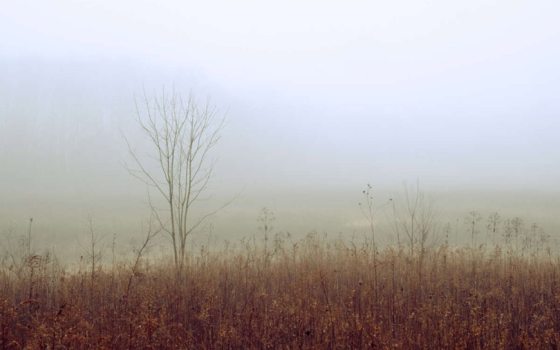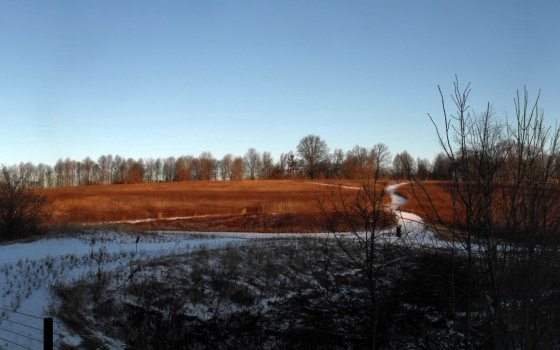In winter, the Meadow Garden trades the bright purples, yellows, and green of the growing season for softer shades of sepia and brown. These muted tones could fool us into thinking there’s nothing happening in the Meadow Garden this time of year, but life is all around when you look for its clues—and careful observation yields beautiful results.
For plants, winter is a time of waiting. Evergreen plants are most striking at this time of year; these plants have special leaves and “antifreeze” compounds in their cells that make them ready to start growing right away when the weather warms. Broad-leaved, deciduous, woody plants must lose their more delicate leaves in winter. They slow their metabolism to a near-standstill, drawing on sugars stored in their roots for only as much energy as they need to stay alive. They shed their leaves in autumn before freezing temperatures can damage them, vacuuming back up expensive-to-make molecules and storing them for next year’s growth. Each of these leaves was once connected to the twig by vascular bundles, or tubes that transport water to the leaf and feed the rest of the plant with the sugars leaves produce. When it’s time for leaves to fall they close off these tubes, leaving characteristic patterns and a bud waiting for the next spring. The buds near each leaf scar enlarge as spring approaches, giving the careful observer an early prelude to the season. If you look closely at the twig of a hickory or walnut, you may even see a leaf scar resembling a monkey face looking back.
The winter soil is full of plants waiting as seeds. A handful of soil can contain many, many seeds—from well-provisioned hickory nut to the tiny seeds of orchids that make a poppy seed look enormous. The seed is sensitive to changes in the environment around it; each embryonic plant waits for just the right combination of day length, moisture, and temperature for its first leaf and root to emerge.
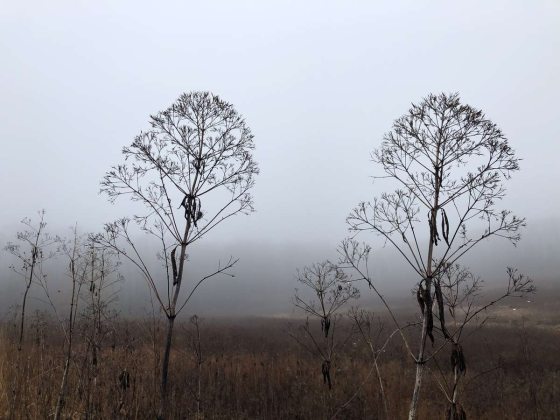
For annual plants, which put all of their resources into making seeds before they die, it’s important to be able to wait a long time in the soil for the right conditions, so that bad weather in one year doesn’t wipe out the plant entirely. These waiting plants are the soil “seed bank”—a source of new plants through time.
One of the notable features of life outdoors in winter is a lack of insects. Like plants, insects wait out the winter in many ways. Some are like annual plants, as they overwinter as eggs laid in warmer months and emerge when the weather is right. They hide in all kinds of places inside plants, like young solitary bees inside hollow stems and carpenter ants under bark. There are flies, wasps, and moths that lay eggs on the stems of goldenrods. Their larvae burrow inside the stem of the plant and release chemical messengers that trigger the plant to grow a special place for them—a gall—where they spend the winter protected. Other insects hide underwater, such as the larvae of mosquitoes. Many hide in the soil, slowing their metabolism to near-nothing, just as trees do. Some, like the periodic cicada, take many years to emerge from the soil, where they munch on roots.
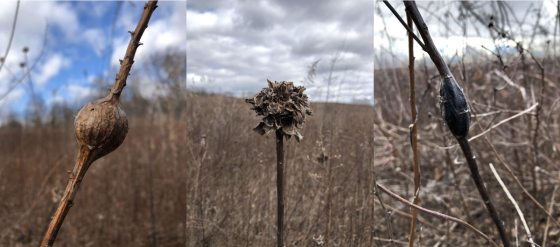
Insects aren’t the only creatures to hide in the soil. Temperatures underground are more constant and warmer than the air in winter, so many animals take advantage of the ground for shelter in winter as well. Chipmunks slow down their breathing and heart rates, stirring only occasionally to dine on stored food they have. Frogs and salamanders, too, slow down and hibernate near streams and ponds.
Winter can also be a time of movement. Wispy-haired Indian-hemp seeds (Apocynum cannabinum) emerge one by one and are carried to new locations as if by umbrella. Pods of legumes like partridge pea (Chamaecrista fasciculata) break open, releasing bean-like seeds by gravity. The dried structures that hold these seeds are among the many beautiful textures found in the Meadow Garden in winter.
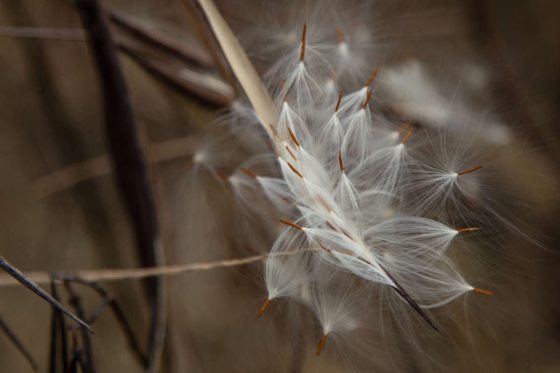

There are some plants and animals that must spend the winter awake and active, too. Meadow voles form winter congregations, huddling for warmth and stockpiling seeds and stems to eat. Voles and mice build a special kind of fat that serves as a heating pad of easy-to-burn energy. Small birds, which can’t store up fat because they must be light to fly, eat constantly and shiver to stay warm, fluffing their feathers for insulation.
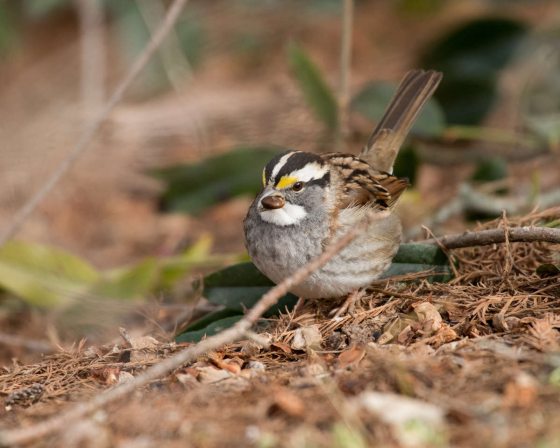
One fantastic way to experience late winter to early spring life in the Meadow Garden is with a Longwood-led bird walk or hike, including our March 9 and March 23 Birds of Longwood Walks; a March 22 Meadow Birding Hike in search of our resident and migratory bird species; and a March 28 Beginner Bird Hike through our Meadow Garden.
Until then, take the time to look closely while exploring our Meadow Garden—winter life is all around.
